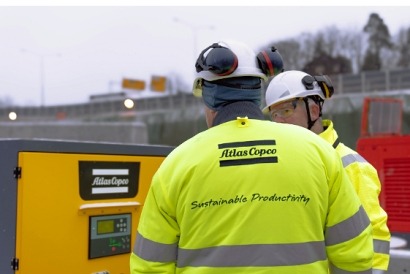
The Strand-Ramstadsletta stretch will have six two-kilometer lanes. The project includes two-thirds of the Høvik tunnel (1,250 meters), the new Ramstadsletta bridge over the E18, an additional crossing at Høvik, part of the cycle route along Sandviksveien, and the adaptation of the current local road system.
In addition, a new water and drainage route is being built. It’s planned that these works will be finished by 2029/2030, as part of the more extensive E18 Lysaker-Ramstadsletta contract – with a cost framework of NOK 23.1 billion, about 2.02 billion euros.
Working towards the decarbonization of the construction industry, the Norwegian government has approved stringent regulations aimed at reducing emissions and limiting noise levels in construction sites. In that framework, the project will be environmentally certified according to BREEAM Infrastructure – aiming to achieve a level of Excellent. BREEAM Infrastructure is the world's leading sustainability assessment, rating, and awards scheme for civil engineering, infrastructure, landscaping, and public realm projects.
Elise Roalkvam, Environmental Consultant at Skanska, emphasizes the need for sustainable solutions, stating, “We are witnessing a transformation in our industry, and Skanska must adapt and push towards more sustainable solutions. To achieve this, we are exploring alternative approaches to power supply, and that’s where battery-based systems come into play.”
Roalkvam also highlights “The use of Atlas Copco energy storage system has changed our operations and how we work. We are still exploring new ways to make the most out of the potential this energy storage system has. For this project specifically, it has led to a reduction in fuel consumption, CO2 emissions, and noise levels.”
Using the ZBC 250-575 energy storage system from Atlas Coco, Skanska saves 340 liters of fuel per day, 4.2 tons of CO2 per week, and a total cost saving of 1,700 euros per week.
In addition, Skanska has implemented the new Atlas Copco distribution box which serves as the central hub for power optimization.
“By regulating the power output, we have constant control. Furthermore, since the energy storage system provides the extra power required beyond 160KW, we successfully avoid overloading the mains,” comments Tom Stadeløkken, Energy Financial Project Leader at Skanska.
Moreover, the new 240kW fast charger is used to recharge electric vehicles and machinery.
“We are pleased to help Skanska on the execution of the new E18 highway with our energy storage systems,” says Jon-Andreas Ellefsen, Atlas Copco Sales Manager. “The energy-saving approach in this project involves regulating the inlet power from the mains to minimize consumption while ensuring a secure power supply. The primary operational advantage is a significant reduction in overall power costs."
This Skanska contract is part of the E18 Western Corridor project, which consists of a new key highway system between Lysaker in Bærum and Drengsrud in Asker municipality. The new E18 initiative will replace one of Norway’s busiest road sections, today well known for traffic problems, poor accessibility for public transportation, and extensive noise and air pollution.

